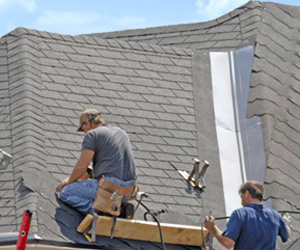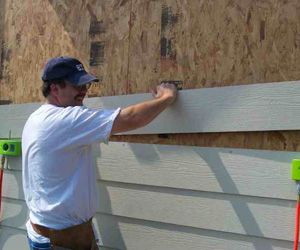Roofing & Siding
How Much Does A New Roof Cost?
 How much does a new roof cost? This is probably the most important question to most homeowners and building owners. The thing is, there are so many factors involved that it’s not something that can just be answered without knowing what the factors are. Here are some of the factors, in no particular order of importance.
How much does a new roof cost? This is probably the most important question to most homeowners and building owners. The thing is, there are so many factors involved that it’s not something that can just be answered without knowing what the factors are. Here are some of the factors, in no particular order of importance.
Factor 1: Is this a re-roof or new construction? If it’s a brand new roof going on a brand new building, it will be cheaper than a re-roof because there are expenses not being incurred such as the labor costs to remove a roof, and fees involved in dumping the roofing material.
Factor 2: What type of new roof is being installed? Just like cars, you’ve got different types of roofs that can accommodate different budgets. For steep slope roofs on houses for instance, there are 20 year composition shingles, one of the cheapest steep slope products on the market, and there is clay tile, one of the more expensive steep slope products on the market running about four times the cost of 20 year composition shingles. For low slope (flat roofs), you’ve got 45 mil TPO single-ply which is far less than half the cost of a more expensive, two-ply modified bitumen roofing material.
IMPORTANT NOTE: There are many other products that go into a new roof. Just because one type of roof covering is, say, half the cost of another, it doesn’t mean the overall roof price is going to be half. There are a lot of other roof system components that can be involved, especially in commercial roofing, and the prices of these other components don’t vary much. For instance, three-inch thick rigid insulation, whether it’s going under a 45 mil TPO roof, or under the more expensive modified bitumen roof, is still the same price to buy it and install it.
 Factor 3: Who makes the material? Just like with cars, there are different companies manufacturing the same type of product. While prices don’t typically vary a lot, there will be differences, just like a Chevrolet ½ ton pickup has a slightly different price than a Ford ½ ton pickup.
Factor 3: Who makes the material? Just like with cars, there are different companies manufacturing the same type of product. While prices don’t typically vary a lot, there will be differences, just like a Chevrolet ½ ton pickup has a slightly different price than a Ford ½ ton pickup.
Factor 4: How is the new roof going to be installed? For shingles, you’re pretty much stuck with nails (NEVER let anyone use staples to install your shingles) so the installation cost doesn’t vary much unless you start talking about using stainless steel nails, or hand-nailing vs. gun nailing. But if you’re talking about flat roofs, there are some installation variables that can have a pretty profound effect on the overall cost. For instance, with a single-ply roof, are you going to adhere it, or is it a ballasted roof? If you adhere, is the adhesive water-based or solvent-based? These, plus many more variables can greatly affect roof price.
Factor 5: Is the old roof being removed, or are you going just overlay it with the new one? If you remove the old roof, there are added labor costs and disposal fees. Plus, I’ve seen old building with as many as SEVEN roofs on them…not really sure how they didn’t collapse. With multiple roofs, labor costs go up quite bit because tear off is very slow.
Factor 6: What components are going under the main roof covering (like shingles)? There are different types of felt. There is the cheapest underlayment, standard #15 felt, then there’s #15 UL felt, or you can go up in price to #30 felt, go up from there to synthetic felt, and there finally there is ice and water protection membrane. For commercial roofing, one of the more expensive components is roof insulation. Most building codes require a minimum thermal resistance value (R-value) of at least R-19. In commercial roofing, this equates to about 3” of polyisocyanurate roof insulation (“iso” for short), a very common roof insulation.
 Factor 7: Other roof components also affect the price.
Factor 7: Other roof components also affect the price.
Edge metal – most residential roofs needs some type of metal edging. That can vary from plain old galvanized steel, to baked-on enamel (pre-finished) steel, to pre-finished aluminum, to stainless steel and copper. Most residential homes have galvanized metal edging that’s painted, but pre-finished is becoming more and more popular. Aluminum is more popular near the coastlines where salt air corrodes steel. Copper is generally used on upscale homes, and you typically won’t see stainless steel in residential applications except on very rare occasions. It’s fairly rare in the commercial roofing market, too.
Metal thickness – Not only are there different types of metal edge, there are different thicknesses of the metal, too. For instance, 26 gauge steel is thinner than 24 gauge steel, so there is a slight cost difference there.
